The Scenic Navajo Nation Byway In Arizona That Leaves Visitors In Awe
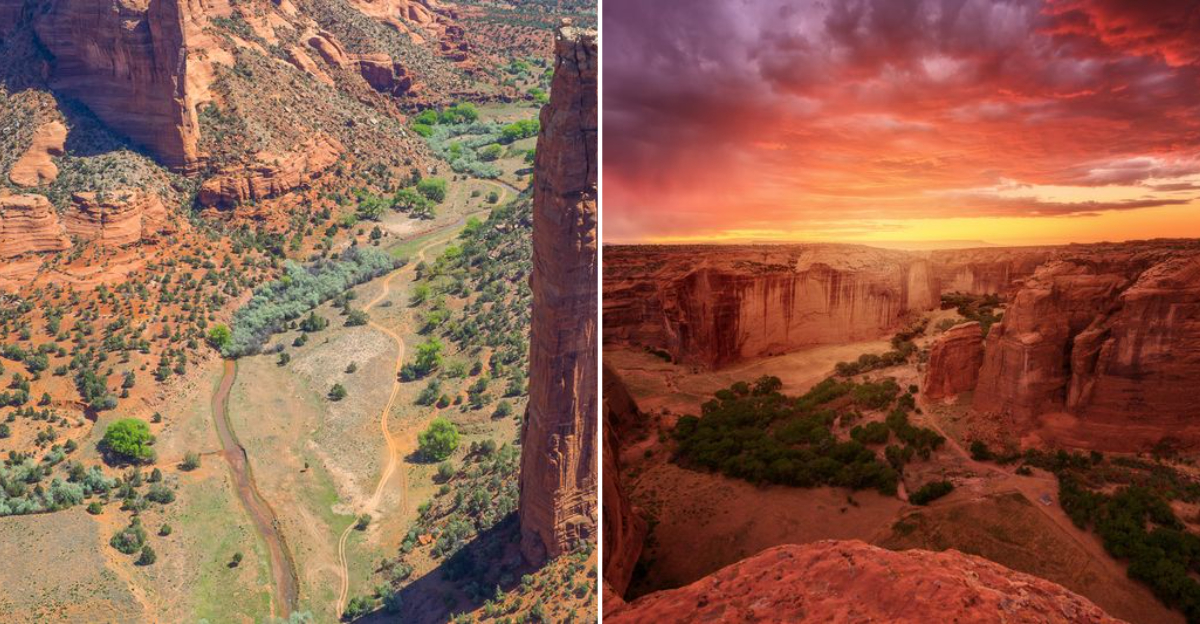
Tucked into the heart of the Navajo Nation in northeastern Arizona lies a natural wonder that has captivated travelers for generations—Canyon de Chelly National Monument.
This stunning landscape of towering red cliffs, ancient ruins, and living Navajo culture offers a journey unlike any other in the American Southwest.
Whether you’re chasing breathtaking overlooks, exploring centuries-old history, or connecting with indigenous traditions, this scenic byway promises an unforgettable adventure that will leave you speechless.
A Living Canyon
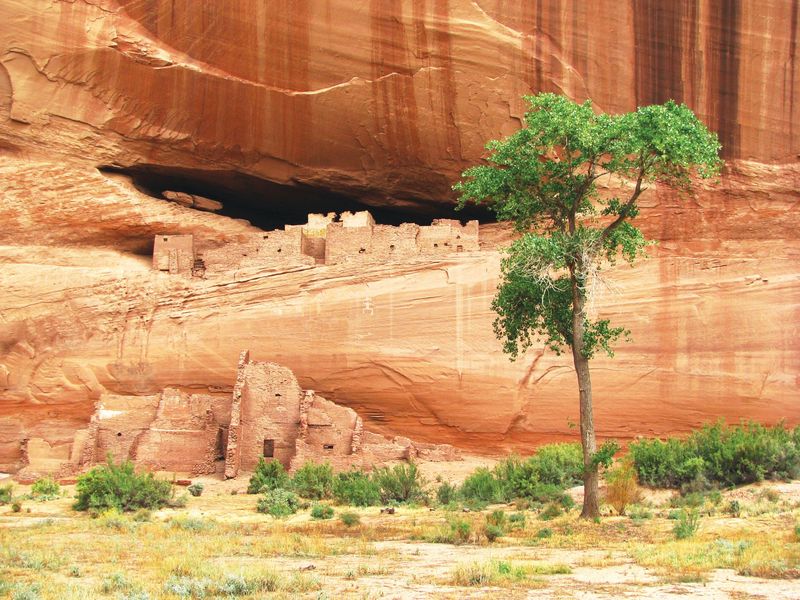
Picture a place where history doesn’t just whisper—it shouts from every rock face and canyon wall. Canyon de Chelly stands as one of North America’s longest continuously inhabited landscapes, with human presence stretching back at least 5,000 years.
From the Ancestral Puebloans who built magnificent cliff dwellings to the Navajo families who call it home today, this canyon pulses with living culture. Unlike museums where history sits behind glass, here you’ll find Navajo shepherds tending flocks beneath the same cliffs their ancestors knew centuries ago.
The canyon floor tells stories through every peach orchard and cornfield, blending ancient traditions with modern life in a way that makes time feel wonderfully fluid.
Spider Rock

Rising like nature’s exclamation point from the canyon floor, Spider Rock commands attention with its nearly 750–800-foot vertical presence. This sandstone monolith isn’t just geologically impressive—it’s spiritually significant to the Navajo people who share its powerful legend.
According to Diné tradition, Spider Woman lives atop this towering spire, teaching the art of weaving to Navajo women and watching over the land below. In some versions of the story, parents told children that misbehaving might earn them a trip to Spider Woman’s summit, where the bleached rocks symbolized the bones of those who disobeyed.
Today, visitors stand mesmerized at overlooks, cameras clicking frantically as they attempt to capture its rust-red majesty against Arizona’s brilliant blue skies.
Where Red Cliffs Meet Green Fields

Most canyons feel empty, carved by wind and water into lifeless beauty. Canyon de Chelly flips that script entirely, showcasing a thriving agricultural landscape nestled between walls of crimson stone.
Navajo families continue generations-old farming traditions here, cultivating small peach orchards and cornfields that flourish in the fertile soil of the canyon floor. Sheep graze peacefully, their bells echoing off canyon walls.
This contrast between vertical geology and horizontal agriculture creates visual poetry that photographers dream about. The living canyon floor proves that beauty and utility can coexist, that sacred spaces can also be working landscapes where families build their livelihoods beneath protective stone.
Panoramic Perfection
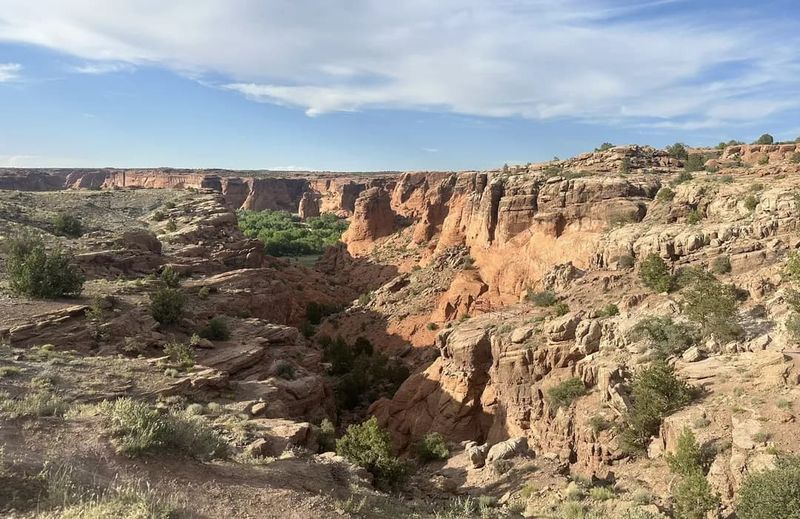
Buckle up for miles of jaw-dropping scenery along the South Rim Drive stretching from Chinle into canyon country that’ll make your Instagram followers weep with envy. Each overlook reveals a completely different personality of this geological masterpiece.
Junction Overlook showcases where canyons merge in dramatic fashion, while White House Overlook frames the famous cliff dwelling against striated sandstone. Spider Rock Overlook delivers the money shot—that iconic spire standing sentinel over the canyon depths.
Smart travelers pack snacks and plan for frequent stops because rushing past these viewpoints feels criminal. The changing light throughout the day transforms the same vista into entirely new experiences worth witnessing multiple times.
Journey With a Navajo Guide
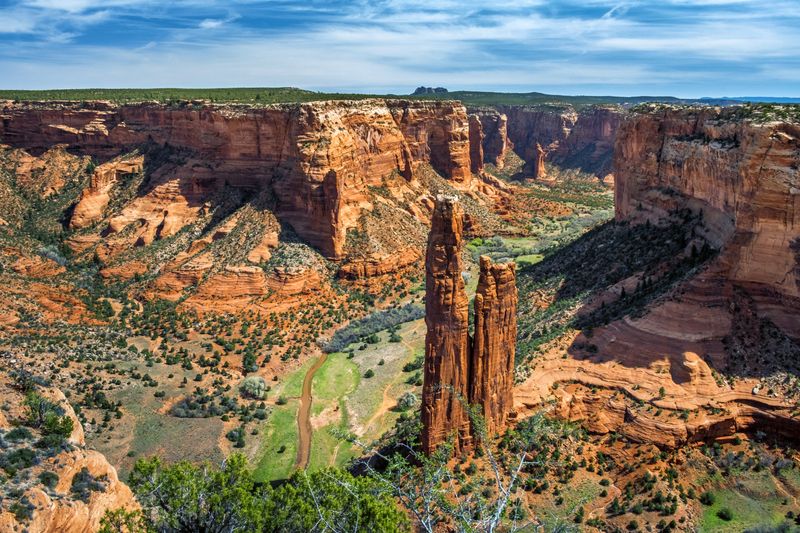
Forget self-guided tours—most access to the canyon floor requires an authorized Navajo guide, though visitors may hike the White House Ruin Trail on their own. That regulation turns out to be the byway’s greatest gift to visitors. These guides don’t just point out landmarks; they weave personal narratives that connect landscape to lived experience.
Your guide might share family stories about growing up on the canyon floor, explain the spiritual significance of specific rock formations, or teach phrases in the Diné language. Suddenly those red walls stop being just pretty geology and become characters in an ongoing cultural story.
This intimate encounter with Navajo history and spirituality transforms tourism into meaningful cultural exchange, leaving visitors with understanding that no guidebook could ever provide.
Hidden Art in the Sandstone
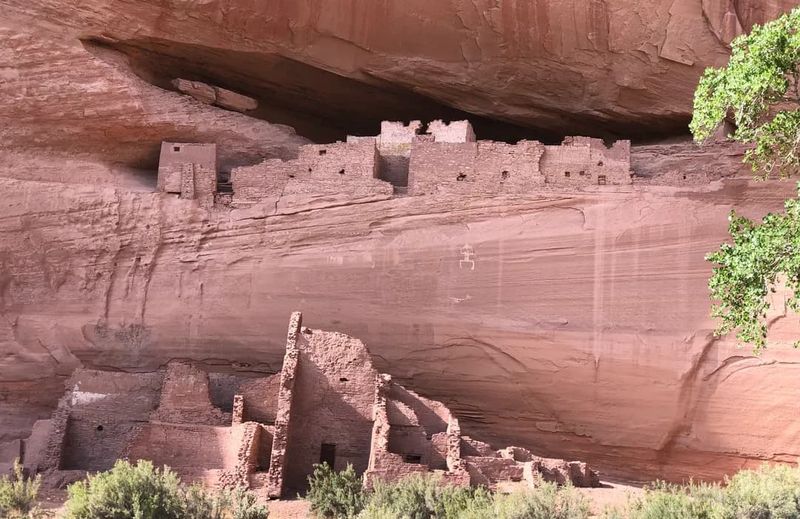
Ancestral Puebloans were Arizona’s original architects, and their cliff dwellings showcase engineering genius that still impresses modern visitors. Tucked into natural alcoves high above the canyon floor, structures like White House Ruins cling to rock faces with gravity-defying determination.
Rock art panels scattered throughout the canyon add another layer of ancient communication—spirals, handprints, and figures etched into sandstone surfaces centuries ago. These petroglyphs serve as tangible links to the Ancestral Puebloan world, messages from people who understood this landscape intimately.
Walking near these sites feels like reading pages from a very old book, where each symbol and dwelling tells stories about survival, spirituality, and community in one of America’s most dramatic settings.
Experiencing Canyon de Chelly at Dawn and Dusk
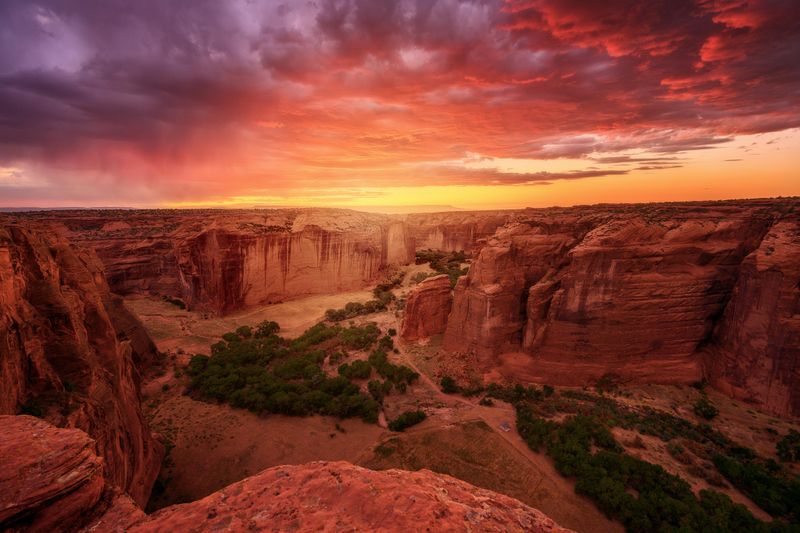
Sunrise at Canyon de Chelly doesn’t just illuminate—it transforms, painting sandstone walls in shades of crimson and copper that seem impossible in their intensity. Early risers are rewarded with a light show that makes the drive worthwhile.
As morning progresses, shadows shrink and colors shift, creating an ever-changing canvas that photographers chase with determination. Sunset reverses the magic, cloaking canyon walls in violet and lavender hues while silence settles like a comfortable blanket.
These golden hours offer more than pretty pictures—they provide moments of genuine connection with a landscape that has witnessed countless sunrises. Standing at an overlook during these transitions makes visitors understand why this remote Navajo Nation byway leaves people absolutely awestruck.
